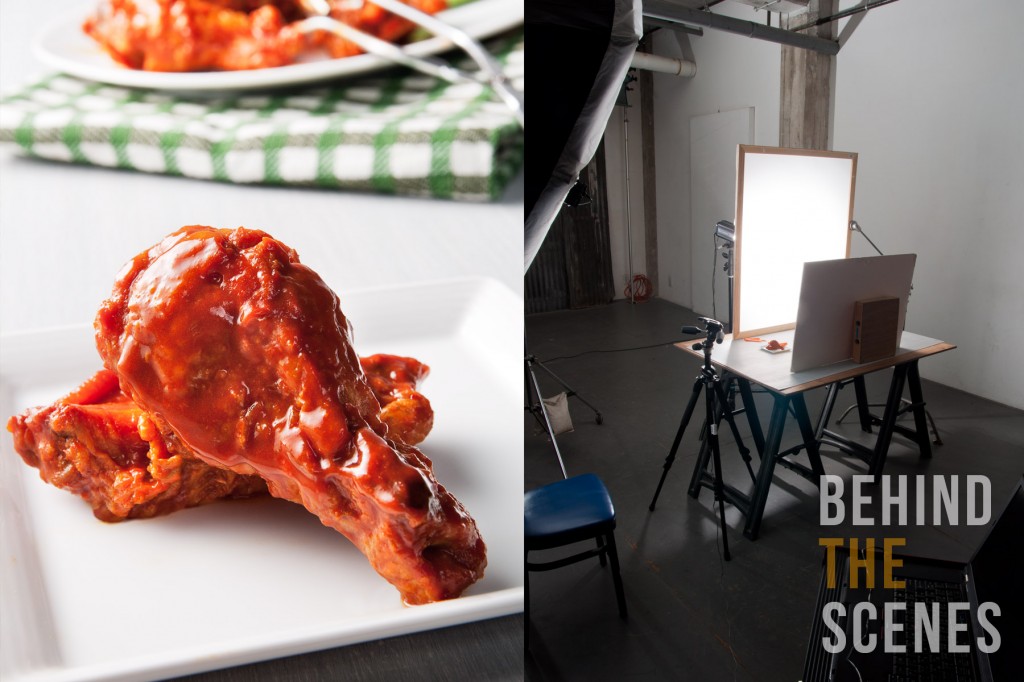
I’m not a fan of dark and moody food photography. When I look at food, I want bright and warm imagery that I can sink my teeth into.
It just so happens that I’m not alone. Read More…

I’m not a fan of dark and moody food photography. When I look at food, I want bright and warm imagery that I can sink my teeth into.
It just so happens that I’m not alone. Read More…

This shoot was lame. I thought it was going to be a cakewalk, but it took me a couple of hours and a 100 frames to get some decent stuff.
As I’ve said before, knowing the nature of an object (textured, translucent, transparent etc) is everything when it comes to food and still life photography. I went into this with a lighting plan for textured objects but ended up photographing a bunch of reduced fat buffalo wings with a highly reflective sauce. Unfortunately, it took an hour and a lot of awful photos before I realized I had everything setup wrong.
When I was doing the research for this post, I noticed that practically every hot wing shot on the web was terrible. I should have taken note that photographing buffalo wings might be a challenge, but I assumed I was better than every other photographer in the world and I would kill it. It was a classic case of arrogance meets stupidity.
Here’s the thing that makes buffalo wings a headache to shoot: With the sauce, they’re mirrored objects that reflect everything around them. In other words, you don’t shoot the wings, you shoot the reflections.
In order to get some nice reflections, I moved a light panel right up against the buffalo wings and lit everything from the side. I then placed a large white board opposite the panel to add a few more reflections. In the end, the buffalo wings looked 3D because they had bright specular highlights from the light panel and soft white shadows from the bounce card.
All in all, I was happy with the final result, and will be ready and humble the next time I have to shoot some wings.

Technical
Camera: Nikon D90
Lens: Tamron 17-50mm 2.8
Strobes: White Lightning x1600
Tripod: Manfrotto
ISO: 200
Focal Length: 50mm
Shutter: 100
Aperture: f/11

A shoot like this is all about the highlights. When photographing white reflective objects with a digital camera, maintaining tone and texture in the highlight areas is paramount. Read More…

This was a fun shoot. As always, preparation is the key to success and I came in with a lighting plan and a good understanding of the subject at hand. Food lighting is usually dictated by either texture or reflection and this this shoot had a bit of both. Read More…
Since this is the day after the Rose Parade and Mondo and I are about to head out to see the floats, I’ll keep the french toast sausages shoot short and simple.
I wanted to do an easy menu shot for Foodgawker and Tastespotting along with a few shots for the post. Unfortunately, I had a lot of trouble getting these to look right. Maybe I was just tired from the holidays, but my lighting was a mess.
After futzing around for a few hours trying to make boring menu photographs I thought Foodgawker would like, I finally started to make photographs that I liked.
Since I was having trouble, I shut down everything except for one light and went back to the basics. This was a textured object, so I setup a light panel on the left and scraped light across the surface of the object. I then placed a white board on the opposite side of the light to reduce contrast. That’s it.
With this simplified setup, I got a few shots I liked, and called it a day.
Camera: Nikon D90
Lens: Tamron 17-50mm 2.8
Strobes: White Lightning x1600
Tripod: Manfrotto
ISO: 200
Focal Length: 50mm
Shutter: 125
Aperture: f/16